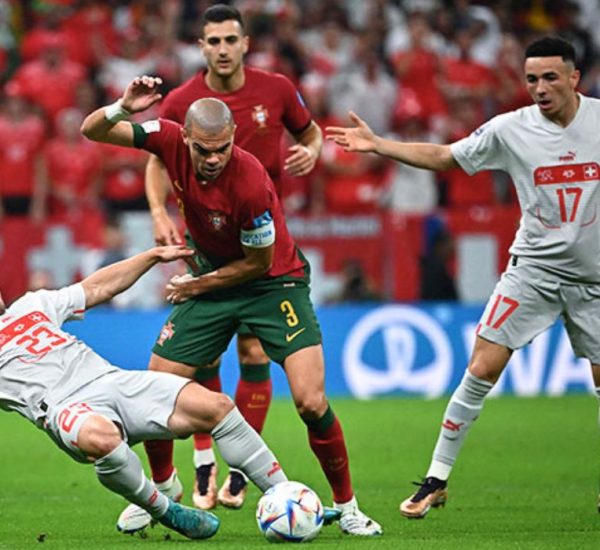Have you ever found yourself watching a soccer match and wondering about the significance of those numbers on players’ jerseys? The world of soccer is not just about kicking a ball around; it’s a strategic game where every position and number holds a crucial role in shaping the team’s performance. From the elusive number 10 playmaker to the sturdy center-backs guarding the goal, each player on the field has a specific position with unique responsibilities. In this comprehensive guide, we delve into the intricate world of soccer positions and numbers, uncovering the secrets behind each role and how they contribute to creating magic on the pitch. So, whether you’re a die-hard fan looking to deepen your understanding or a newcomer eager to decode this beautiful game, buckle up as we take you on an enlightening journey through the diverse landscape of soccer positions and numbers.
Introduction: Overview of soccer positions and numbers
In the world of soccer, each player on a team is assigned a specific position and number that reflects their role within the game. Understanding these positions and numbers can provide valuable insight into how teams are structured and strategies are implemented on the field. The numbering system in soccer typically follows a standard format, with certain numbers traditionally associated with specific positions.
For example, the number 1 jersey in soccer is usually reserved for the goalkeeper, as they are considered the last line of defense. This signifies their importance in protecting the goal and orchestrating plays from the back. On the other end of the spectrum, attacking players like forwards or strikers often wear numbers in the range of 7-11 to highlight their role as goal-scorers and creative sparks in the team’s offense. By paying attention to these positional numbers, fans can easily identify which players hold key roles within a team’s structure during matches.

Goalkeeper: Role, skills, and jersey number
The goalkeeper in soccer holds a unique and critical role on the field. Often described as the last line of defense, goalkeepers are tasked with not only preventing goals but also initiating attacks through precise distribution. Their primary skills include exceptional reflexes, agility, positioning, and strong communication abilities to organize the defensive line effectively. The jersey number typically worn by goalkeepers is 1, symbolizing their singular importance within the team structure. This number signifies their responsibility to safeguard their team’s goal at all costs and act as a pillar of strength under intense pressure.
A goalkeeper’s role extends beyond shot-stopping; they serve as the ultimate decision-maker under high-stakes scenarios. Their ability to read the game, anticipate opponent movements, and command their area plays an instrumental part in determining a team’s success. Jersey number 1 not only represents individual prowess but also embodies leadership and confidence, essential traits for any successful goalkeeper. In modern football, where attacking innovations constantly evolve, goalkeepers must possess a diverse skill set that adapts to tactical variations for optimal performance.
Defenders: Responsibilities and common numbers
Defenders in soccer play a crucial role in protecting their team’s goal and initiating attacks from the back. They are typically assigned numbers 2, 3, 4, and 5 on the field, representing right-back, left-back, center-back, and sweeper positions respectively. These players are known for their strong defensive skills such as tackling, intercepting passes, and marking opposing attackers closely.
One key responsibility of defenders is to maintain a solid defensive shape to prevent opposition players from scoring. They must communicate effectively with their teammates to organize the defensive line and track the movement of opponents. Additionally, modern defenders are also expected to contribute offensively by participating in set-pieces and supporting attacks down the flanks. The evolution of the defender role highlights the versatility required in today’s game beyond just defending.

Midfielders: Duties, positions, and numbering system
When it comes to midfielders in soccer, they are the engine room of a team, tasked with both defensive and offensive duties. The positions within the midfield can vary depending on the team’s tactics, with players like holding midfielders, central midfielders, attacking midfielders, and wide midfielders all having distinct roles to play. Each midfielder is given a specific number based on their designated role on the field, such as the number 6 for a holding midfielder or the number 10 for an attacking midfielder.
Understanding the numbering system for midfielders can provide insight into their primary responsibilities during a match. For example, wearing the number 8 typically signifies a player who is versatile and skilled in both defense and attack. Additionally, modern tactics have led to fluidity in midfield positions, allowing players to interchange roles seamlessly throughout a game. This flexibility adds an element of surprise to a team’s playstyle and keeps opponents guessing about how best to defend against them.
Forwards: Attacking roles and typical shirt numbers
Forwards are the attacking powerhouses of a soccer team, responsible for creating scoring opportunities and putting the ball in the back of the net. Their role is dynamic and requires a combination of speed, skill, and tactical awareness. Typically, forwards wear shirt numbers 7, 9, or 11 – numbers that are synonymous with creativity and goal-scoring prowess.
The number 7 jersey is often associated with wingers or secondary strikers who excel at dribbling past defenders and providing assists. In contrast, the number 9 shirt is reserved for traditional center-forwards whose primary focus is on scoring goals through clinical finishing and physical presence in the penalty area. Additionally, the number 11 jersey is usually worn by left wingers known for their pace and ability to cut inside to create goal-scoring opportunities for themselves or their teammates.
Overall, forwards play a crucial role in determining the outcome of a match through their ability to break down opposing defenses and convert chances into goals. The choice of shirt number further emphasizes their unique skills and responsibilities on the field, providing fans with a glimpse into the specific strengths each forward brings to their team’s attack strategy.

Utility Players: Versatility in positions and numbers
Utility players in soccer are a rare breed, their value often underestimated until they emerge on the field, seamlessly transitioning between positions and numbers. These versatile players act as the linchpin of any successful team, able to adapt to various roles based on the team’s needs. While some may argue that specialization is key in modern soccer, utility players bring a sense of unpredictability and adaptability that can turn the tide in crucial moments.
Their ability to play multiple positions not only adds a layer of unpredictability for opponents but also provides managers with a tactical advantage. Whether it’s filling in for an injured player or changing formations mid-game, utility players offer a level of flexibility that can be game-changing. By mastering different positions and understanding the intricacies of each role, these players become invaluable assets capable of turning challenges into opportunities on the field.
Conclusion: Importance of understanding roles and numbers
Understanding the roles and numbers in soccer is crucial for players and coaches alike. Each position on the field has a specific set of responsibilities and expectations that contribute to the overall strategy of the game. By knowing these roles and numbers, players can better communicate with their teammates, anticipate movements, and make effective decisions during gameplay.
Numbers play a significant role in soccer beyond just player positions. They also indicate tactical formations, offensive or defensive strategies, and even player strengths. Coaches often use numbers to analyze data, track performance metrics, and make informed substitutions or adjustments during matches. Therefore, having a comprehensive understanding of both roles and numbers enhances not only individual player performance but also team cohesion and success on the field.



